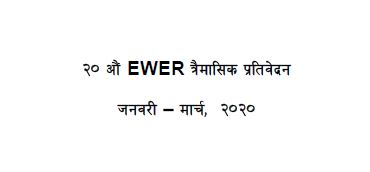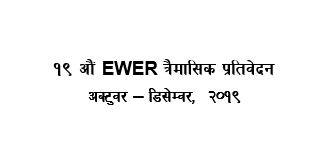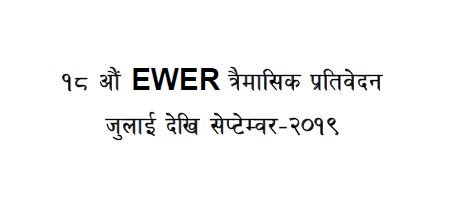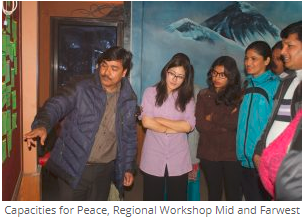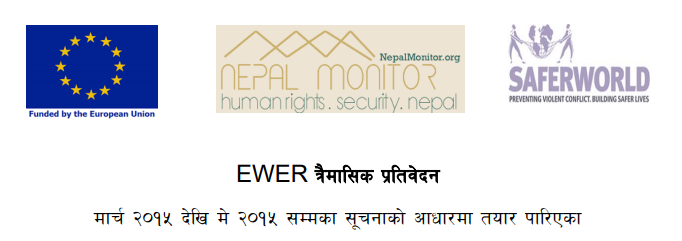Incident Reports
Road to justice; Tika P. Dhakal's Oped on Transitional Justice
2018-12-31
Nepal
On February 9, 2019 Truth and Reconciliation Commission (TRC) and Commission of Investigation on Enforced Disappeared Persons (CIEDP), formed to deal with Nepal’s conflict-era abuses of human rights, will reach yet another end of the term. Constituted four years ago for addressing crucial transitional justice (TJ) questions within two years, mandate of these commissions stretched further two years from the original. Overall, the nonperforming commissions present a conspicuous case study of delays, political meddling and defective process.
The Comprehensive Peace Accord (CPA) signed in 2006 between the Government of Nepal and Maoist party provided for, among other things, an immediate formation of these commission(s). In subsequent years, as the Maoists became part of democratic mainstream and started increasingly behaving like state establishment as much as, if not more or less, the Nepali Congress and CPN-UML, collective political expediency muzzled necessary political will and leadership to drive the transitional justice process.
It was only in 2015, nine years after the signing of CPA, that the commissions could be established at the constant nudge of the victims, human rights defenders and international community. Over the past four years, TRC accepted above 60,000 cases, while CIEDP has received 3300 cases. Registration of these cases occurred in response to an open call by the commissions, which the victims and experts alike regard as being deeply flawed. Beyond writing prima facie comments (which the commissions claim as being equivalent to preliminary investigations) on very few of them, both commissions have demonstrated ample disinclination towards serious investigation and truth-finding. Many victims are believed to have missed petition deadlines because the commissions embarked on their journey on severe trust deficit, facing non-cooperation from the local human rights defenders, international community and victims. Despite all this, the commissions sought term extension at every dead-end. The governments of all hues have happily granted it.
Narrow focus
Nepal’s transitional justice process has failed to pursue the transformative agenda of CPA. Most of the visible TJ initiatives refrain from keeping the victims at the center of their discourse, tend to be expert-driven and openly legalistic and limited to criminal justice options. As a result, the TJ process with each passing day seems to be moving away from the socio-economic dimensions of the conflict, indifferent to its root causes. Moreover, victims and civil society members perceive the founding of the two commissions as a move to dissuade international community from pursuing cases under universal jurisdiction.
Intense focus on the legalistic aspects of TJ process unites political establishment and security forces at the expense of the victims. It is not that Nepal has not done anything for conflict victims. Nepal actually falls among those very few post-conflict countries where all kinds of victims in large number have received interim assistance and livelihood support. But whatever has been done has mostly remained invisible and isolated as well as insufficient in the absence of a consolidated post-conflict peace policy. This hitherto inadequate process, therefore, needs a rethink to make a decisive stride towards holistic TJ configuration.
Holistic framework
While persuading Nepal’s political leadership toward the holistic TJ framework, national human rights community as well as international institutions must genuinely credit the success of Nepali peace process. Transitional justice constitutes an integral part of the peace process. One must at the same time recognize that the implementation of the CPA has liberated Nepal from the tension between peace and justice, a rare phenomenon in many post-conflict countries. The justice process in Nepal no longer threatens peace now. Since peace has been secured, any political resolution may comfortably focus on justice and accountability as the concluding elements of the CPA. Incentive of this process can potentially project Nepal’s current political leadership in much brighter light than many would imagine at the moment.
With this perceptive backdrop, the end of mandate of the two commissions without any tangible achievement could be seen by a few as posing risk to the justice process but it actually provides the government with an opportunity to rethink options and calibrate its initiative toward a holistic approach of dealing with the legacy of the past.
Approved by the United Nations Human Rights Commission in 1997, the holistic approach to combat impunity, also known as Joinet/Orentlicher principles (because they were developed by Loius Joinet, who was the UN Special Rapporteur and Diane Orentlicher, a Professor of Law) consists of four basic components: Right to Know the Truth, Right to Reparation, Right to Justice, and Guarantee of Non-recurrence through a set of institutional reforms.
Balancing universality of UN human rights principles, sovereignty of a modern democratic state willing to be seen as a respected member in the community of states provides enough leverages to creatively implement these principles to suit different country contexts. Of course, these elements can be adapted to reflect Nepal’s political reality as well.
Given the wide variety of options available from over a couple of hundred examples of transitional justice modalities around the world, Nepal must make its own choices. Any process to reconcile must be homegrown in all aspects and must be Nepali-led. A combination of concepts such as truth, compassion and dignity provide Nepal with a principal framework to design its way forward. Technically, these three concepts are easily connected to international discourse on TJ and various strands of policy and practical actions thereof. In Nepali context, this will pave way for a holistic, medium to long term step to ensure a course of action while addressing the root causes of conflict.
Demand for mechanism
As soon as this discourse moves toward the holistic approach from the current narrow and legalistic one, transitional justice rises to become transformative justice. Assessed through the prism of holistic principles, the two transitional justice commissions in Nepal can accomplish only one job: Investigate the petitions and find the truths about them.
But here is the dilemma. Should the victims wait for reparations until the commissions reveal truth? Who will seriously assess the needs of the victims for reparations? Who will carry forward the tasks of rehabilitating the displaced victims? Who will support the government in designing national campaign for peace and memorialization?
Given that the truth-seeking of complex cases requires rigorous investigation which often tends to be frustratingly time-taking, how long should the victims wait before their immediate but varying needs are taken into account and addressed? The families of missing persons endure physical, social and psychological trauma. The victims of torture and sexual abuse are yet to be identified and provided support with. Persons suffering disability require additional assistance for livelihoods. All kinds of victims, particularly women, may be in need of different medical attention. The list goes longer. Most importantly, the TJ instruments, members and new commissioners, should adroitly speak the language of tolerance, compassion, dignity and healing. Can they?
It was probably these sets of questions which prompted the victims of conflict, organized under the umbrella of Conflict Victims’ Common Platform (CVCP), to demand for a high level mechanism through their charter adopted in November. If such a mechanism is formed, it can potentially support designing and implementing national reparations policy, and recommend for guarantee of non-recurrence, satisfying the two other principles identified in the holistic approach. Such instrument can be made broader to ensure greater say and meaningful participation of victims in a process where the stake of civil society could also be incorporated.
The mechanism could either be a committee formed by an executive decision, or another commission as the CPA says but definitely not an alternative to the TJ commissions. The commissions, as the CVCP says, shall be working independently in a free and fair manner. Once they complete their investigations, find truth, and finish reconciliation process in less apparent cases, remaining cases progress to the transitional justice court for trial as recommended by the commissions. Any attempt to make a political decision that presage the report of the commissions about number of cases to be tried at the competent court of law should be opposed.
For a legalist, all TJ components may look purely judicial. In fact, they are not. As transitional justice is a politico-legal process, it comprises both judicial and non-judicial elements. Corresponding instruments, therefore, could be deployed to deal with them. For instance, the commissions to find truth are quasi-judicial mechanisms. Trial of conflict-era cases takes place at transitional justice courts or special courts, which are purely judicial instruments. However, reparations and institutional reforms are non-judicial components, requiring persistent attention even after the commissions and courts may have finished their tasks; and therefore, they may be supported through administrative measures. The relevance of proposed mechanism thus seems to come from a deep understanding of the implementable values of transitional-transformative justice, which however may not be to the liking of law pedantry.
Bangkok conference
Nepal’s peace process has drawn attention of many people around the world. Countries undergoing violent conflict seem to be willing to know more about the process that Nepal initiated in 2006 and has so far completed several tasks in comparably short time. This learning of Nepal was shared in the Asia-Pacific regional conference in Bangkok in November.
The conference had delegation level participation from Nepal and the Philippines, while other presenters came from South Africa, Spain, Switzerland and France. From Nepal, political leaders who played key role for the success of Peace Process presented their experiences. It was the same from the Philippines side where the peace process is still a work in progress. Idea of a press statement was dropped considering sensitivity of the evolving Philippines process.
As a participant of this conference, I can say this was in no way a program focused alone on Nepal, neither was it an exercise to make any decision on Nepal’s transitional justice process, as has been laughably claimed by some. As a nation seeking to move ahead with good wishes and support from the democratic world, Nepal should continue presenting its experiences in all international forums. This will help further popularize our peace process.
By addressing the legacy of the past, transitional justice ultimately paves the road towards the future. It advocates for a set of current measures aimed at building the bridge to link the past with the future. The government of Nepal at the moment has limited options and time to build this bridge, from where the nation wants to cross the Rubicon.
The author is a post graduate in Conflict Studies from University of Wisconsin Madison
tikadhakal31@gmail.com
